900,000 years ago the fire went out. The bright red faded to darkness, and the final puffs of smoke drifted into nothingness. The volcano that rose above the high, flat plateau was extinct.
A millennium ago the land around the volcano’s base was part of the Khmer empire; the people that built mighty Angkor were here, too. Their stonemasons carved blocks of stone to build temples, libraries, resting houses. They fashioned ornate lintels with elaborate scenes from Hindu Mythology: gods and demons in perpetual struggle.
When the masons had put down their tools, the worshippers came. They walked up the long promenade made from laterite blocks and lined with short columns topped with stylised lotus buds.
They passed ponds full of flowering water lilies. They walked over three bridges, each with naga balustrade, before passing the walls that delimited the temple compound and entering the gallery which leads to the inner sanctum. To get to the inner sanctum they passed stern, stone guardians…
and a statue of Nandi, the bull chariot of Shiva.
Then, at the very heart of the temple, they saw the Shiva lingam and yoni (stylised male and female reproductive organs). Priests would pour offerings of oil and milk which would run over the stone phallus onto the receptive womanly parts.
And today I stepped in the footsteps of these ancient worshippers.
***
Phanom Rung was built at the same time as the earliest temples around Angkor. The quality of the craftsmanship is equal to all but the very finest of work in Cambodia, and the scale of the temple is impressive. However, unlike the temples around Angkor, this temple was deserted – not a single other tourist on the entire site, just a few gardeners sweeping away a scattering of fallen leaves.
***
On the plain below Phanom Rung there is a number of smaller Khmer temples. I only visited one, Prasat Meuang Tam.
It dates from the 10th century C.E. And features a cluster of prasats, the largest of which is now a pile of rubble, inside a laterite boundary wall.
There are also formal L-shaped ponds around the corners of the temple. The bridges that crossed the moat outside the temple (now dry) are long gone, as is the Khmer empire that built them. The Siamese swept across the plateau and on even to Angkor itself, which they sacked in 1431 C.E., bringing back the statues, bronzes, architecture and dancing girls to enrich Thai culture. And the Khmer empire was no more.
[289]


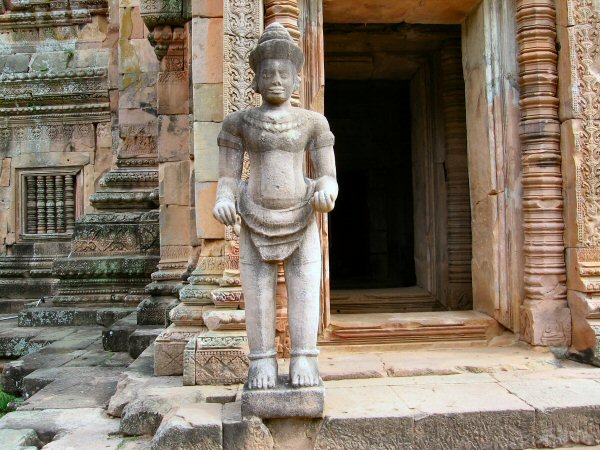
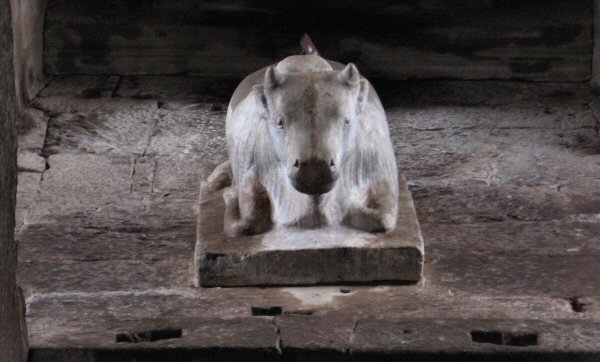
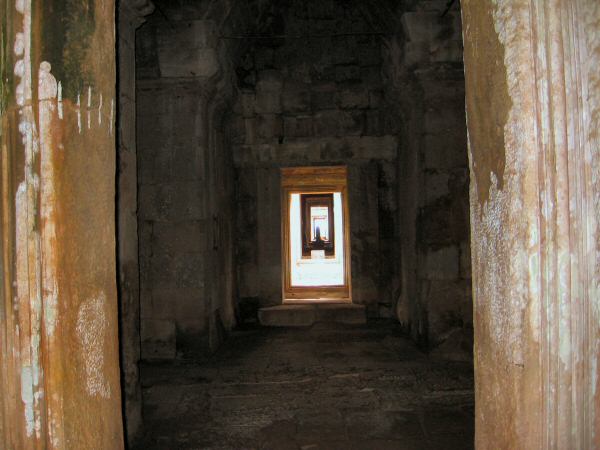
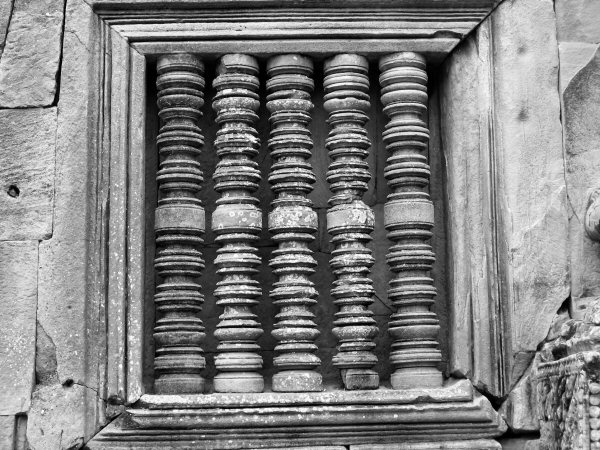
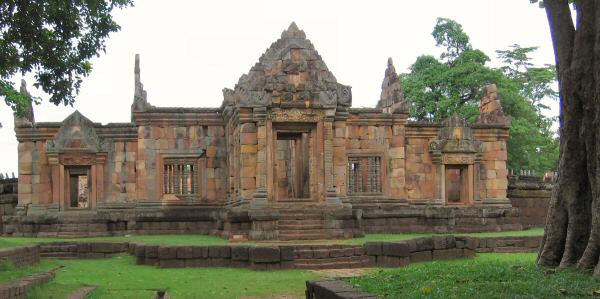

Pingback: Phanom Rung Vandalised « A Postcard From Thailand
Pingback: Supporting the Tourist Industry « A Postcard From Thailand
Pingback: No Love Lost: Thailand and Cambodia « A Postcard From Thailand